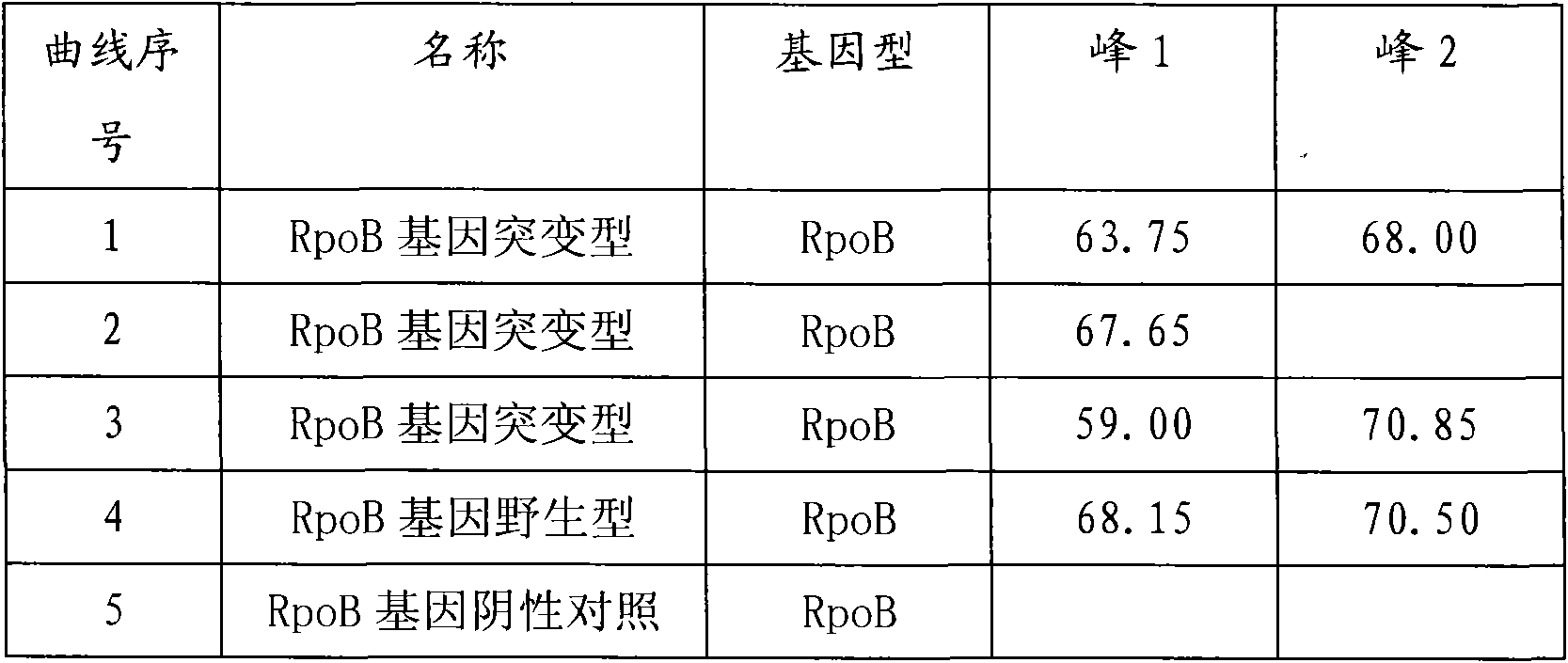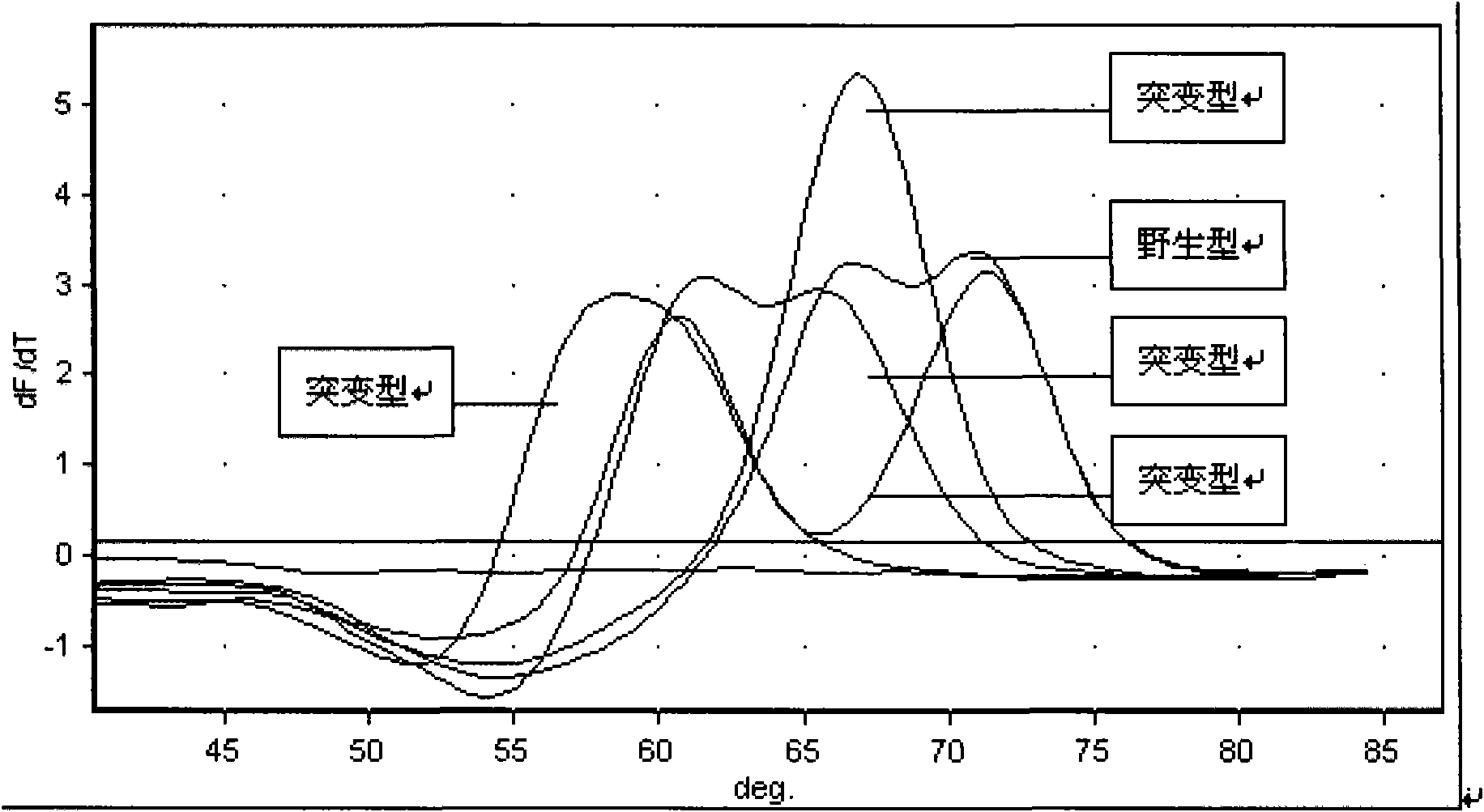Method and kit for detecting multi-drug resistant mycobacterium tuberculosis (MDR-TB)
A Mycobacterium tuberculosis, drug-resistant technology, applied in biochemical equipment and methods, DNA/RNA fragments, material excitation analysis, etc., can solve problems such as increasing method specificity and increasing detection costs
- Summary
- Abstract
- Description
- Claims
- Application Information
AI Technical Summary
Problems solved by technology
Method used
Image
Examples
Embodiment 1
[0072] Example 1: Design and synthesis of primers and probes
[0073] Rifampicin and isoniazid are the key first-line drugs in the tuberculosis treatment regimen and the anti-tuberculosis drugs most prone to drug resistance. Studies have shown that 97% of rifampicin-resistant strains are caused by mutations in rpoB genes (511, 513, 515, 516, 518, 519, 522, 526, 531 and 533 sites), and the mutations are mainly concentrated in a highly conserved 81bp region. Isoniazid resistance is mainly related to the katG gene (position 315) encoding catalase-peroxidase, the inhA gene encoding reduced nicotinamide adenine dinucleotide-dependent enoyl carrier protein reductase ( -8, -15) and mutations in the ahpC gene (-6, -9, -10 and -12) encoding alkyl catalase. The embB306 mutation is a highly specific genetic marker associated with tuberculosis multidrug resistance. Design primers and probes based on the above five gene sequences related to tuberculosis drug resistance, and ensure that ...
Embodiment 2
[0076] Embodiment 2: the extraction of sample DNA
[0077] The clinical sample isolates identified as positive for Mycobacterium tuberculosis after culture were taken, inactivated by high temperature, and then the sample DNA was extracted with a commercial genomic DNA extraction kit. The obtained genomic DNA was directly used for tuberculosis drug resistance detection or stored at -20°C until use.
Embodiment 3
[0078] Embodiment 3: Extraction of sample DNA
[0079] Take 2ml of sputum, add 2.5 times the volume of 4% NaOH, and incubate at 37°C for 30min. The liquefied sputum was centrifuged to remove the supernatant, and the resulting precipitate was used for sample DNA extraction. Sample DNA was extracted with a commercial genomic DNA extraction kit. The obtained genomic DNA was directly used for tuberculosis drug resistance detection or stored at -20°C until use.
PUM
 Login to View More
Login to View More Abstract
Description
Claims
Application Information
 Login to View More
Login to View More - R&D
- Intellectual Property
- Life Sciences
- Materials
- Tech Scout
- Unparalleled Data Quality
- Higher Quality Content
- 60% Fewer Hallucinations
Browse by: Latest US Patents, China's latest patents, Technical Efficacy Thesaurus, Application Domain, Technology Topic, Popular Technical Reports.
© 2025 PatSnap. All rights reserved.Legal|Privacy policy|Modern Slavery Act Transparency Statement|Sitemap|About US| Contact US: help@patsnap.com



